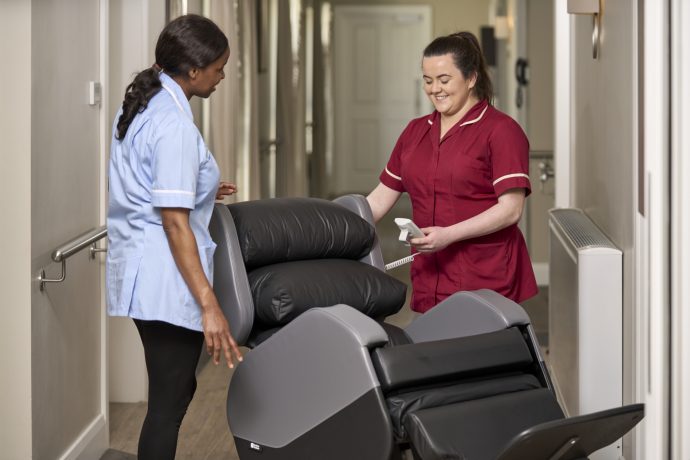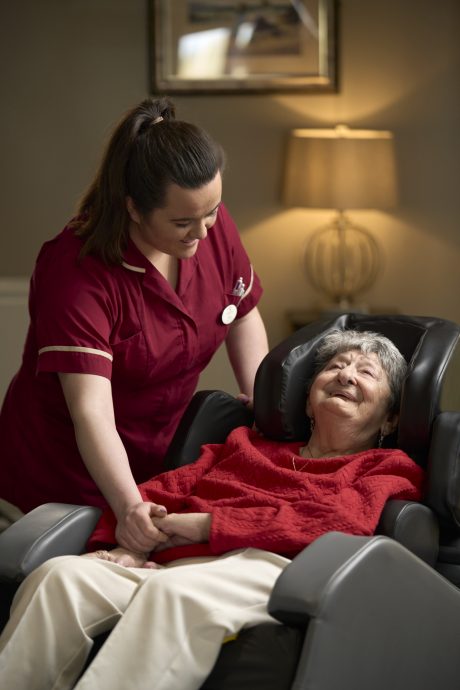
2nd September 2025


Let our online product finder guide you through our simple steps to choose the chairs that best meet your patient’s needs.
Seating Solution FinderThe Envelo cushion provides excellent pressure redistribution and comes as standard on all Seating Matters chairs, meeting the clinical needs of most clients.
Explore Envelo RangeSeating Matters specialises in clinical, therapeutic seating solutions designed to improve patient care and safety, offering products for pressure injury prevention, postural support, and mobility assistance in healthcare settings.
Learn MoreDiscover how Seating Matters has transformed lives with our innovative seating solutions - read our inspiring customer success stories now!
Customer StoriesUsed in academia, in clinical practice and with caregivers around the world to guide their practices around specialist seating.
Download Free Handbook

Pressure injuries are thought to be preventable in the majority of cases, and can cause serious health issues and death. Please join us on our mission to reduce the incidence of these debilitating pressure ulcers!
Often, only the cushion of the chair is considered when thinking of pressure management, but focus purely on the cushion can actually increase pressure risk to patients. We have written this article outlining coming mistakes made when using pressure cushions in which you can learn more about this issue.
New industry leading research by Ulster University and Seating Matters has revealed four key areas that collectively, should be followed to ensure optimum pressure management is achieved whist seated.

1. Load the Body
When you increase an individual’s surface area contact with their chair, you can reduce the pressure exerted through any one point. Achieved through correct seat dimensions – seat height, depth, width, foot plate height and angle.
2. Provide Postural Support
Proper support for the patient can help maintain a midline posture and manage the distribution of pressure throughout the body. Achieved through correct seat dimensions plus head, lateral and leg supports.
3. Effective Repositioning
Guidelines recommend that seated individuals are repositioned every 2 hours. This can increase blood flow and the amount of oxygen reaching the skin. Research shows that 45° tilt can maximise the potential for significant blood flow increase and pressure reduction. Achieved using tilt in space in the Phoenix and Sorrento chairs and back angle recline in our full chair range.
4. Use an Appropriate Surface
The Seating Matters cushion is a Visco memory foam based cushion coated in Dartex, an anti-shear, multi
stretch material. This allows any bony prominences to submerge into the foam, achieving maximum surface area contact and reducing interface pressure. The fact that the material is breathable can help reduce the risk of pressure ulcers developing by reducing moisture on the surface of the skin. A medium to high risk memory foam cushion is standard on all our chairs. The cushion is removable to accommodate alternate cushions if required.
Remember, that the surface or cushion is listed as principle number 4 because if principles 1, 2 and 3 are not adhered to then optimum levels of pressure management cannot be achieved.
When carrying out a Seating Assessment, it is imperative to assess for a chair you chose provides all four principles to be effective in managing pressure risk. We are here to answer any questions or support you with joint assessments.
** Note - the purpose of this blog is to give an overview of the product with some tips to consider on its use. This is not intended to be a substitute for professional or medical advice, diagnosis, prescription or treatment and does not constitute medical or other professional advice. For advice with your personal health or that of someone in your care, consult your doctor or appropriate medical professional.
Sign up to our mailing list to get practical tips and latest research delivered to your inbox!
Take the next step to achieve clinical excellence and a 24 hour package of care for patients.

Arrange a free, no obligation seating consultation with your local Seating Specialist.

Schedule a call at a time that suits you to speak with our experts.

Arrange a free, no obligation trial of clinical, therapeutic seating

2nd September 2025

15th August 2025

15th August 2025